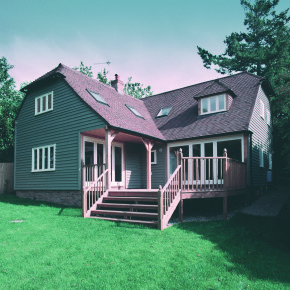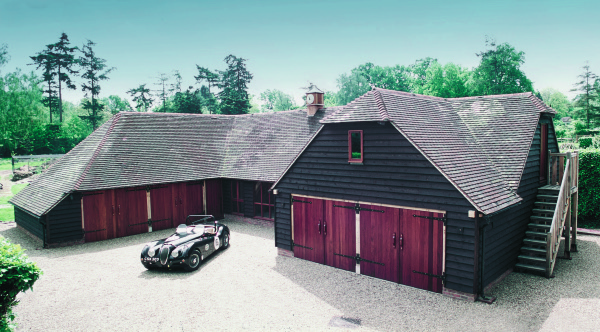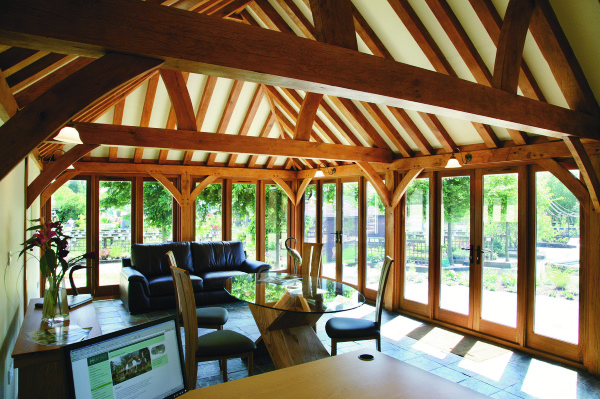
Why we should all be considering a Dry Build as a construction alternative
Darren Hook, Managing Director of English Heritage Buildings, explores the growing popularity of Dry Build construction within the industry.
As technology improves, there are an increasing number of construction offerings available. The industry is constantly on the lookout for faster, smarter and more economical approaches, whilst also keeping an eye on their environmental credentials.
Dry Build constructions are becoming an ever-more popular alternative to traditional building methods. The concept itself is not new, but the implications and benefits have only recently started to be fully appreciated. With the housing market growing across the board, both in terms of an increased need for affordable housing and Brexit encouraging home-owners to ‘improve, don’t move’ the need for better building options has never been greater.
The concept is simple; a Dry Build engages the same fundamental methods as traditional bricks and mortar building, but uses different materials. ‘Dry’ materials include wood, gypsum board and plywood. When used instead of traditional moisture-retaining materials such as concrete and plaster the impact on build time, finances and eventually energy efficiency are incomparable.
Wood has a physical quality not available in man-made materials; it provides sound insulation, keeps interiors at a constant temperature and, surprisingly offers more safety in the case of a fire. It also provides an infinitely malleable and multi-functional surface, affording designers almost unlimited freedom in their work.
The construction system itself is also much more versatile and faster, in fact construction time can be cut by up to half when compared to traditional wet construction involving bricks and blocks. The implications for house builders are immeasurable, as earlier occupancy means earlier income, and bespoke projects can take place with minimum impact and fuss. The Dry Build technique also requires much less water and generates minimum construction waste, making much less of an impact on the local environment.
Not only does a Dry Build reduce waste and time commitments, the materials used are also cost effective, more durable, stronger, lighter and more adaptable, leading to greater flexibility in construction design
When it comes to financial benefit, the real cost-effectiveness relies on key features such as speed of installation, as well as being low maintenance and easy to repair. The materials are easily optimised, so there is minimal wastage.
Dry Build construction is a well-known phenomenon, but it is still largely uncommon. In most situations its purpose is not to replace traditional wet methods, but complement them and create an alternative for builders. When it comes to adding an aesthetic extension to a property a Dry Build is becoming an increasingly popular alternative.
One comment on “Why we should all be considering a Dry Build as a construction alternative”
Leave a Reply
You must be logged in to post a comment.
Latest news

19th April 2024
ASSA ABLOY: Access solutions can impact sustainability performance across the full life-cycle of a building
Embedding sustainability within any organisation requires a broad, strategic perspective. Scrutiny should include the physical infrastructure itself: According to the IEA, buildings consume around 30% of global energy*. ASSA ABLOY has more…
Posted in Access Control & Door Entry Systems, Architectural Ironmongery, Articles, Building Industry News, Building Products & Structures, Building Regulations & Accreditations, Building Services, Case Studies, Doors, Facility Management & Building Services, Information Technology, Research & Materials Testing, Retrofit & Renovation, Security and Fire Protection, Sustainability & Energy Efficiency, Video of the Week
19th April 2024
British weather doesn't dampen spirit for new HMG Garden Paint
Despite one of the wettest starts to the year on record, customers are starting to plan for brighter days with HydroPro Garden Paint from HMG Paints.
Posted in Articles, Building Industry News, Building Products & Structures, Garden, Innovations & New Products, Paints, Paints, Coatings & Finishes, Restoration & Refurbishment, Retrofit & Renovation, Site Preparation, Sustainability & Energy Efficiency, Waste Management & Recycling
18th April 2024
Abloy UK showcases new digital portfolio at The Security Event 2024
Abloy UK is set to unveil its latest line-up of access control systems at The Security Event 2024, welcoming guests to explore its cutting-edge electromechanical and digital solutions on stand 5/F50.
Posted in Access Control & Door Entry Systems, Architectural Ironmongery, Articles, Building Industry Events, Building Industry News, Building Products & Structures, Building Services, Doors, Exhibitions and Conferences, Facility Management & Building Services, Health & Safety, Information Technology, Retrofit & Renovation, Security and Fire Protection
18th April 2024
Strand is a Failsafe Choice for Emergency Exit and Panic Hardware
In times of emergency, you’re in safe hands with Strand Hardware. Although there are many considerations for building specification, few decisions can be as critical as selecting the right emergency exit/panic hardware.
Posted in Access Control & Door Entry Systems, Architectural Ironmongery, Articles, Building Industry News, Building Products & Structures, Building Services, Doors, Facility Management & Building Services, Health & Safety, Restoration & Refurbishment, Retrofit & Renovation, Security and Fire Protection



Not sure if dry build is an option in London. I have seen houses that has been build from wood and it just looks awful. After a year the wood has lost its beauty due to humidity. Though brick house looks the same for many years unlike wood house. Hence why we at https://www.proficiencyltd.co.uk suggest to stick to brick wall. Recently I went to Interior Show and there was one company who build house from cardboard. I though that was crazy maybe good idea to construct one of those houses abroad where it is mostly sunny.